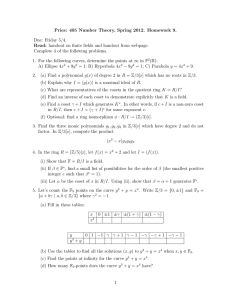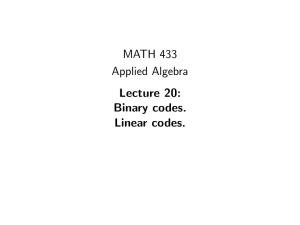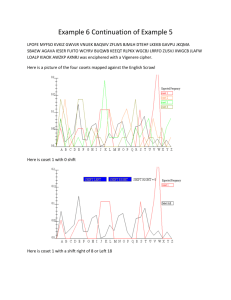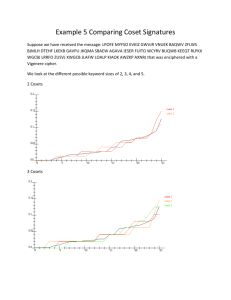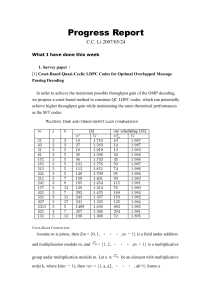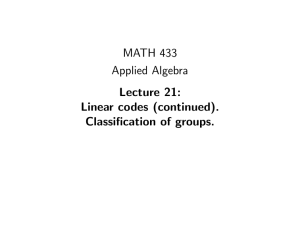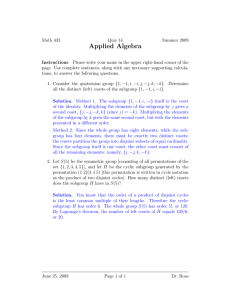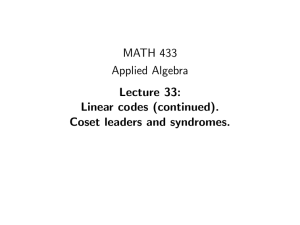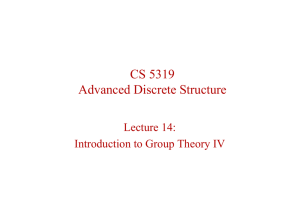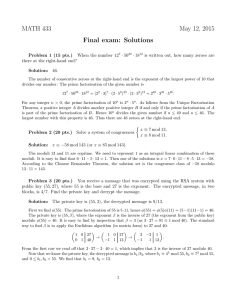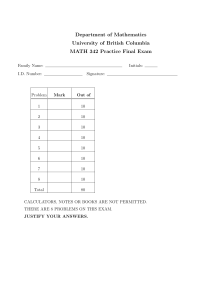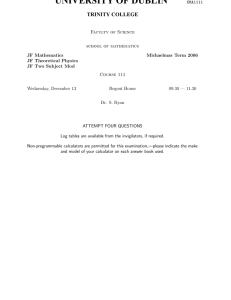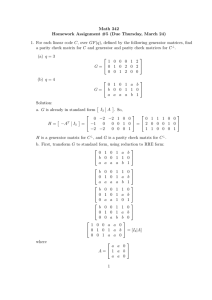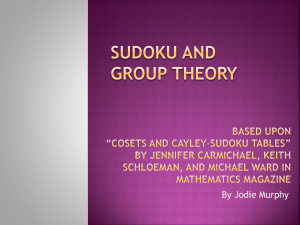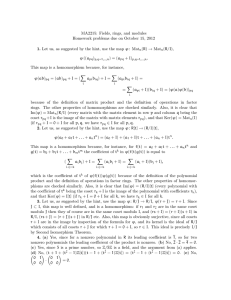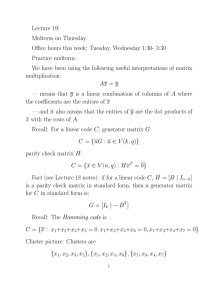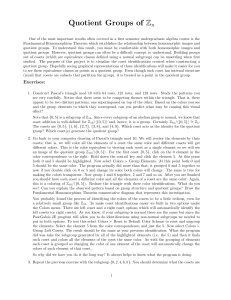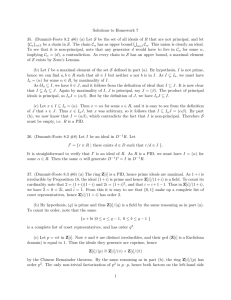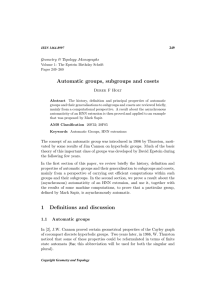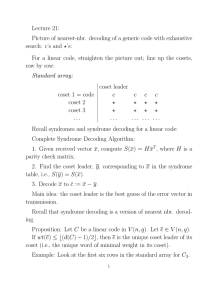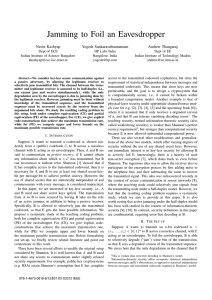Applied Algebra
advertisement
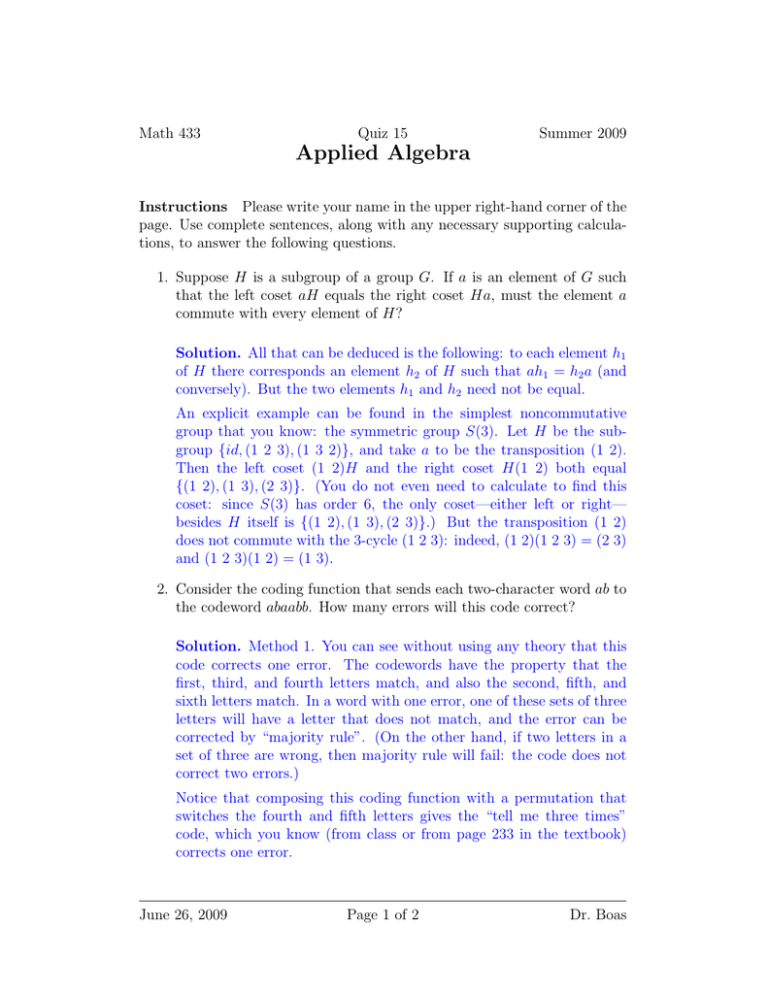
Math 433
Quiz 15
Summer 2009
Applied Algebra
Instructions Please write your name in the upper right-hand corner of the
page. Use complete sentences, along with any necessary supporting calculations, to answer the following questions.
1. Suppose H is a subgroup of a group G. If a is an element of G such
that the left coset aH equals the right coset Ha, must the element a
commute with every element of H?
Solution. All that can be deduced is the following: to each element h1
of H there corresponds an element h2 of H such that ah1 = h2 a (and
conversely). But the two elements h1 and h2 need not be equal.
An explicit example can be found in the simplest noncommutative
group that you know: the symmetric group S(3). Let H be the subgroup {id, (1 2 3), (1 3 2)}, and take a to be the transposition (1 2).
Then the left coset (1 2)H and the right coset H(1 2) both equal
{(1 2), (1 3), (2 3)}. (You do not even need to calculate to find this
coset: since S(3) has order 6, the only coset—either left or right—
besides H itself is {(1 2), (1 3), (2 3)}.) But the transposition (1 2)
does not commute with the 3-cycle (1 2 3): indeed, (1 2)(1 2 3) = (2 3)
and (1 2 3)(1 2) = (1 3).
2. Consider the coding function that sends each two-character word ab to
the codeword abaabb. How many errors will this code correct?
Solution. Method 1. You can see without using any theory that this
code corrects one error. The codewords have the property that the
first, third, and fourth letters match, and also the second, fifth, and
sixth letters match. In a word with one error, one of these sets of three
letters will have a letter that does not match, and the error can be
corrected by “majority rule”. (On the other hand, if two letters in a
set of three are wrong, then majority rule will fail: the code does not
correct two errors.)
Notice that composing this coding function with a permutation that
switches the fourth and fifth letters gives the “tell me three times”
code, which you know (from class or from page 233 in the textbook)
corrects one error.
June 26, 2009
Page 1 of 2
Dr. Boas
Math 433
Quiz 15
Summer 2009
Applied Algebra
Method 2. You can list all the codewords (assuming that the code is a
binary code): namely, 000000, 101100, 010011, 111111. All the codewords differ from each other in at least 3 positions (in the terminology
that we used in class today, the minimum weight of a nonzero codeword
is 3), so the code corrects 1 error (in Theorem 5.4.2 on page 236 in the
textbook, k = 1).
June 26, 2009
Page 2 of 2
Dr. Boas
